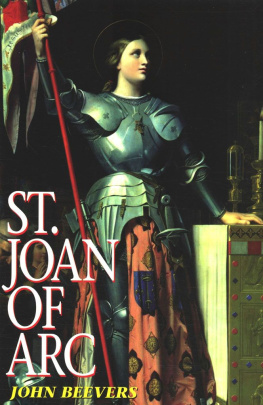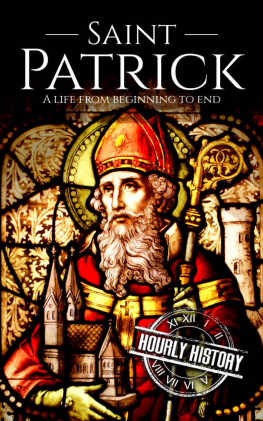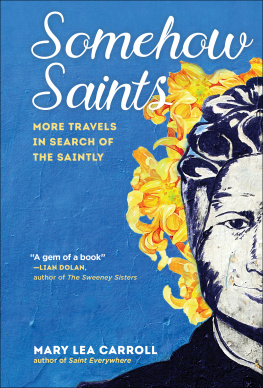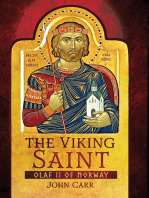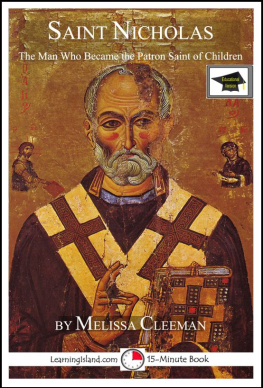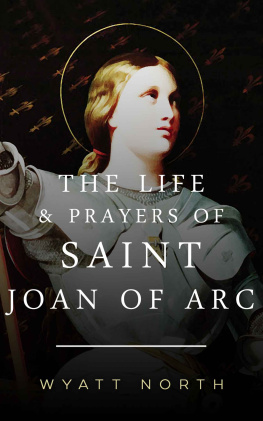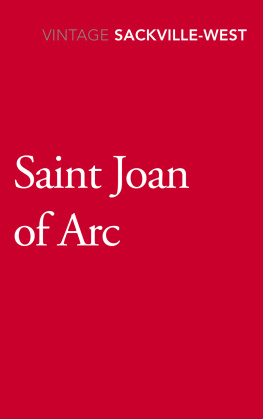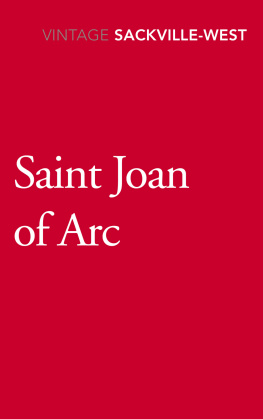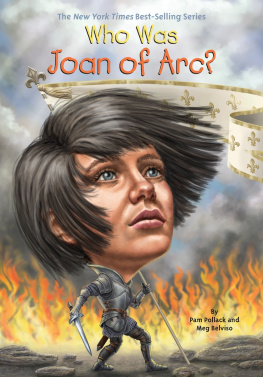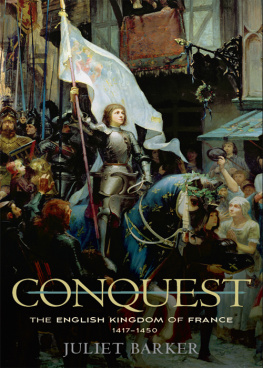John Beevers - St. Joan of Arc
Here you can read online John Beevers - St. Joan of Arc full text of the book (entire story) in english for free. Download pdf and epub, get meaning, cover and reviews about this ebook. year: 1989, publisher: TAN Books, genre: History. Description of the work, (preface) as well as reviews are available. Best literature library LitArk.com created for fans of good reading and offers a wide selection of genres:
Romance novel
Science fiction
Adventure
Detective
Science
History
Home and family
Prose
Art
Politics
Computer
Non-fiction
Religion
Business
Children
Humor
Choose a favorite category and find really read worthwhile books. Enjoy immersion in the world of imagination, feel the emotions of the characters or learn something new for yourself, make an fascinating discovery.
- Book:St. Joan of Arc
- Author:
- Publisher:TAN Books
- Genre:
- Year:1989
- Rating:5 / 5
- Favourites:Add to favourites
- Your mark:
- 100
- 1
- 2
- 3
- 4
- 5
St. Joan of Arc: summary, description and annotation
We offer to read an annotation, description, summary or preface (depends on what the author of the book "St. Joan of Arc" wrote himself). If you haven't found the necessary information about the book — write in the comments, we will try to find it.
St. Joan of Arc — read online for free the complete book (whole text) full work
Below is the text of the book, divided by pages. System saving the place of the last page read, allows you to conveniently read the book "St. Joan of Arc" online for free, without having to search again every time where you left off. Put a bookmark, and you can go to the page where you finished reading at any time.
Font size:
Interval:
Bookmark:
Saint Joan of Arc
John Beevers
Nihil Obstat: Gall Higgins, O.F.M. Cap.
Censor Librorum
Imprimatur:Francis Cardinal Spellman
Archbishop of New York
July 27, 1959
The nihil obstat and imprimatur are official declarations that a book or pamphlet is free of doctrinal or moral error. No implication is contained therein that those who have granted the nihil obstat and imprimatur agree with the contents, opinions, or statements expressed.
Copyright 1959 by Doubleday & Company, Inc.
Copyright 1974 by TAN Books and Publishers, Inc.
TAN BOOKS
Charlotte, North Carolina
1981
CONTENTS
This is the story of a young girl who died when she was nineteen. She was no beauty and no scholar. She could neither read nor write. She came from the obscurity of a small, remote hamlet and in less than fifteen months had crowned a king, set in motion events that were to save her country from foreign domination, defeated the forces of a great nation, and changed the history of western Europe. She was burned to death as a heretic. Nearly five hundred years later she was canonized and became the patron saint of the country she saved. It is one of the most astonishing stories in history. This is an attempt to tell it simply but accurately and to peel away the smothering husk in which some historians have enclosed it. It is a task I have enjoyed and I hope that what I have done will enable others to feel the magic of those far-off summer days when this young girl, astride her charger, rode conquering through the fields and woods of France. But it is far more than the story of a conquest, far more than a medieval pageant. It is the story of a great saintJoan of Arc.
1. The Girl
I T RAINED throughout the night. In the English camp the soldiers lay exhausted in their sodden tents. Some were ill; all were hungry, dirty, and unkempt. They had stormed Harfleur, losing many of their numbers in the business and many more had died of dysentery. They had set out to march to Calais to wait there until more men from England could join them. But the French set out after them and now they had caught them and there were three Frenchmen to every Englishman. There was jubilation in the French camp. At last, after many, many years of savage fighting, the English were to be destroyed.
The dawn came slowly, for the clouds were low and heavy with rain. The English rose and constructed before their ranks a palisade of sharply pointed stakes sloping toward the enemy. The archers assembled. Their weapons were a bow of yew wood five feet long and a bundle of arrows each two feet six inches in length, tipped with steel and flighted with the feathers of the gray goose. The arrows could drive through an armored breastplate and through the body of the man behind it. The English bowman was the most formidable killer in Europe. He did not look it. He was short and stocky, usually dirty and ill-shaven, wearing a patched or torn leather doublet and a rusty light helmet. He could, of course, neither read nor write. He drank a lot and swore more or less continually. His favorite oath was "God damn," which was so commonly on his lips that throughout France the English were called "Godons," the nearest the French could get to the native pronunciation. But he had no rival in the art of shooting an arrow with immense power, accuracy, and speed. The high, unending whistle of the English arrows was a sound of terror. For a century it had meant defeat and death. And, most important of all, the English bowman was the freest manof his conditionin all Europe. He was not a serf. Nor did his king and the great barons despise him. They knew his worth too well. They were all bound together in a rough camaraderie. So on that gray autumn morning, king, lords, and bowmen faced the French, ready to die together but quite sure that, once again, victory would be theirs.
A spectator would not have had that certainty. The French were a formidable host, seemingly invincible. In immaculate armor, the chivalrous Frenchmen sat astride their heavy chargers. Very few men were on foot, only a handful of pikemen and the cross-bowmen who used the slow and cumbersome machine which fired a bolt released by a trigger. Banners and pennants were flying; there were shouts and laughter and the neighing of horses. All were well armed and supremely confident, and they outnumbered the English by three to one. All they had to do was to charge and trample the English into the mud. But, as even the most patriotic French historian admits, the leaders of the French at that time were stupid and incapable of learning the simple, bloody lessons the English had given them over and over again. They persisted in believing that battles were won by nobles encased in armor and sitting on steeds as strong as cart horses and not much more agile. They despised foot soldiers and made little use of them. If they got in their way during a battle, they rode them down.
And so, at about ten o'clock on that particular morning, they and their horses advanced to slaughter the English. A great line of metal-clad figures moved at a clumsy gallop across the soggy ground. It was magnificent, both as a spectacle and a target.
The English waited. At last, as the French lumbered within range, there came the growling shout, "For God, for Harry, and St. George!" and, as it died away, the thin whistle of the arrows. It was a very quiet business compared with a modern battlefield, quiet but deadly, and the knights of France began to tumble from their saddles. Those behind pressed on, riding over and crushing the fallen until they, in their turn, toppled down with an arrow through the throat or ribs. Straight and pitiless, the flight of the arrows never ceased, nor did the French advance. Those few riders who reached the English had their horses impaled on the sharpened stakes, and a dismounted man in armor was easy meat. When the English bowman had killed a fair number of the French and reduced the rest to a confused, leaderless mass, they dropped their bows, picked up billhooks, short-handled maces and knives, and sallied forth from behind their stakes. It was all over before the sun went down. Ten thousand Frenchmen were dead, many of themagainst all the laws of warhaving had their throats slit because they were not worth holding to ransom. Another thousand of the French were prisoners. The English lost just over a hundred men.
That day was St. Crispin's Day, October 25, in the year 1415, and the place was Agincourt.
It was a great victory, one of the many inflicted on the French since the battle of Crcy in 1346, when the English archers first showed their quality. It seemed that there was nothing to stop the whole realm of France from falling into English hands. But over on the other side of France a girl had been born less than three years before. Her name was Joan, and later she was to say to the English invaders: "Go away. For God's sake, get back to your own country." It was not long before they went, driven out by the victorious French. That the French were victorious was due to one person and one person onlythis girl.
Before we begin her story, there is some history to be mastered. It is confused, full of squalid motives and not very interesting, but without a knowledge of it we cannot appreciate the greatness of Joan. No doubt we all knew something of this history in our schooldays and no doubt we have all forgotten it.
On Christmas Day, 1066, William, Duke of Normandy, was crowned King of England in Westminster, and for the next four centuries France and England were closely linked, so closely that at one time it seemed they might form one great kingdom. In 1152, William's great-grandson, Henry II, married Eleanor of Aquitaine and acquired her lands, so that he ruled an area of France stretching from the English Channel to the Pyrenees and from the Bay of Biscay to withinat one pointa few miles of the Rhone. More than half France was ruled by the King of England and, for many years, it was a situation accepted without question by the French. But it was not destined to last. French nationalism began to develop. There were incidents, bitter quarrels and skirmishesstill very far short of a major war, but serious enough for the two countries to sign the Treaty of Paris in 1259, by which Henry II's grandson, Henry III, handed vast areas of France back to the French Crown and agreed that he would hold what he kept in homage to the King of France.
Next pageFont size:
Interval:
Bookmark:
Similar books «St. Joan of Arc»
Look at similar books to St. Joan of Arc. We have selected literature similar in name and meaning in the hope of providing readers with more options to find new, interesting, not yet read works.
Discussion, reviews of the book St. Joan of Arc and just readers' own opinions. Leave your comments, write what you think about the work, its meaning or the main characters. Specify what exactly you liked and what you didn't like, and why you think so.

